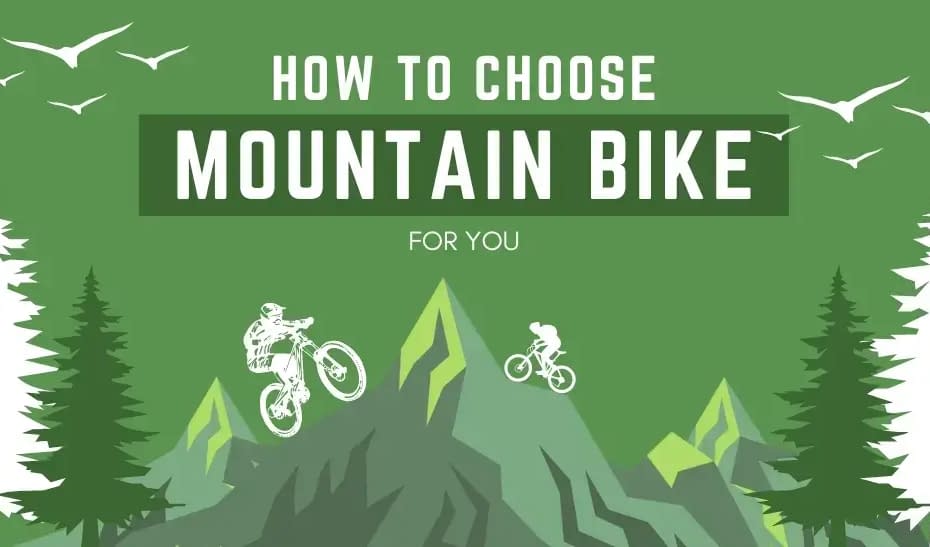Choosing the right mountain bike can feel like a daunting task, especially with the plethora of options available today. Whether you’re a seasoned cyclist or a beginner ready to hit the trails, finding the perfect bike is crucial for an enjoyable and safe riding experience. This guide will walk you through everything you need to know to make an informed decision.
Understanding Your Needs
Before diving into the specifics, it’s essential to understand your own needs and preferences.
Are you planning to ride on smooth trails, rugged mountain paths, or a mix of terrains? Your riding style will significantly influence the type of bike you should choose.
Beginner riders have different needs compared to advanced cyclists. Be honest about your skill level to ensure you get a bike that matches your abilities.
The type of terrain you plan to ride on will also impact your bike choice. Different bikes are designed for different terrains, so think about where you’ll be spending most of your time.
Types of Mountain Bikes
Mountain bikes come in various types, each designed for specific purposes.
Cross-country (XC) Bikes: XC bikes are lightweight and efficient, perfect for long-distance rides and climbing.
Trail Bikes: Trail bikes are versatile, handling a variety of terrains with ease. They’re a great all-rounder option.
Enduro Bikes: Enduro bikes are built for rugged terrain and aggressive riding, making them ideal for downhill and technical trails.
Downhill (DH) Bikes: Designed for steep descents and high speeds, DH bikes are heavy-duty and feature robust suspension systems.
Fat Bikes: Fat bikes come with oversized tires, offering excellent traction on snow, sand, and loose dirt.
Key Components to Consider
When choosing a mountain bike, pay attention to these crucial components.
Frame Materials
The material of the bike frame affects weight, durability, and ride quality.
Aluminum: Aluminum is the most common material, known for its light weight and affordability.
Carbon Fiber: Carbon fiber frames are lighter and more responsive but come with a higher price tag.
Steel: Steel frames are durable and offer a smooth ride, though they tend to be heavier.
Titanium: Titanium combines strength and lightweight, providing an excellent ride quality, but it is the most expensive option.
Suspension Systems
The suspension system is critical for absorbing shocks and providing a smoother ride.
Hardtail vs. Full Suspension: Hardtails have suspension only in the front, while full-suspension bikes have both front and rear suspension. Full suspension offers better control and comfort on rough trails but is more expensive and heavier.
Front Suspension: Front suspension, or a suspension fork, helps absorb impacts on the front wheel.
Rear Suspension: Rear suspension, or a shock absorber, smooths out the ride on the back wheel.
Lockout Features: Some suspension systems come with lockout features that allow you to disable the suspension for better efficiency on smooth surfaces.
Wheel Size and Type
Wheel size affects handling and ride quality.
26-inch Wheels: 26-inch wheels are nimble and quick, suitable for technical trails and maneuverability.
27.5-inch Wheels: 27.5-inch wheels offer a balance between agility and stability, making them a popular choice.
29-inch Wheels: 29-inch wheels provide better rollover capability and are great for maintaining speed over rough terrain.
Tubeless vs. Tubed: Tubeless tires offer lower rolling resistance and better puncture resistance, while tubed tires are easier to repair.
Brakes
The braking system is crucial for safety and control.
Rim Brakes: Rim brakes are lighter and cheaper but less effective in wet or muddy conditions.
Disc Brakes: Disc brakes offer superior stopping power and performance in all conditions.
Hydraulic vs. Mechanical Disc Brakes
Hydraulic disc brakes provide better modulation and power, whereas mechanical disc brakes are easier to maintain.
Gears
The gearing system affects how well you can tackle different terrains.
Single-speed vs. Geared Bikes: Single-speed bikes are simple and low-maintenance but limited in versatility. Geared bikes offer a range of gears to handle various inclines and speeds.
Number of Gears: More gears provide more options for tackling different terrains but can add complexity and weight.
Drivetrain Types: There are various drivetrain configurations, including 1x (single chainring) and 2x or 3x setups, each with its own benefits.
Fit and Comfort
Ensuring the bike fits you properly is crucial for comfort and performance.
Bike Sizing
Bikes come in different sizes, so choose one that matches your height and riding style. Most manufacturers provide size charts to help you select the right frame size.
Adjusting the Saddle
Proper saddle height and angle can prevent discomfort and injury. Adjust the saddle to ensure your legs are slightly bent at the bottom of the pedal stroke.
Handlebar Types and Adjustments
Handlebars come in various shapes and sizes. Choose one that offers a comfortable grip and position. Adjust the height and angle to suit your preference.
Budget Considerations
Mountain bikes come in a wide range of prices. Determine your budget to narrow down your options.
Entry-level Bikes
These are affordable and suitable for beginners. They offer basic features and durability for casual riding.
Mid-range Bikes
Mid-range bikes provide a balance of performance and cost, offering better components and build quality.
High-end Bikes
High-end bikes are designed for serious riders and come with advanced features, lightweight materials, and superior performance.
Test Riding
Before making a final decision, it’s crucial to test ride a few bikes.
Importance of Test Rides
Test rides allow you to feel how the bike handles and ensure it fits you well.
What to Look for During a Test Ride
Pay attention to comfort, handling, and responsiveness. Ensure the bike meets your expectations and feels right for your riding style.
Conclusion
Choosing the right mountain bike involves understanding your needs, exploring different types, and considering key components. Take your time to research, test ride, and consult experts if necessary. With the right bike, you’ll enjoy countless hours of adventure and fun on the trails.
